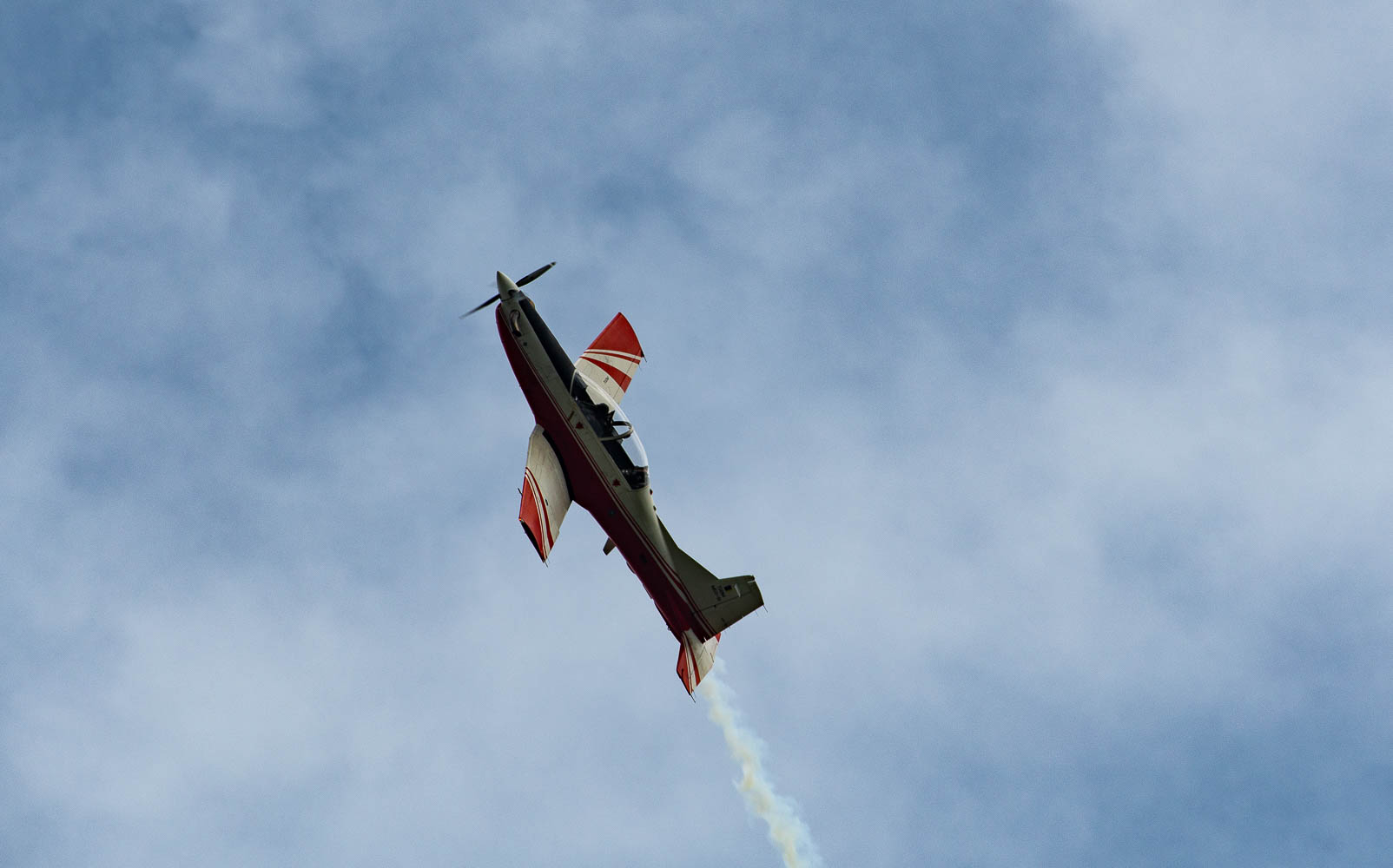
SHAH ALAM: Younger pilots for Malaysian Armed Forces (MAF). Thirty trainees – from the Armed Forces – and cadet-officers from the National Defence University of Malaysia – Universiti Pertahanan Nasional (UPNM) Malaysia – received their pilot wings at the passing out parade at the Kolej Tentera Udara, Alor Setar, Kedah, December 17.
From the thirty, eight are officers – likely from RMAF and twenty-two are cadet-officers. The cadet-officers are the first batch of trainees from the 2U2I programme which started in 2019 (see below for further explanation)
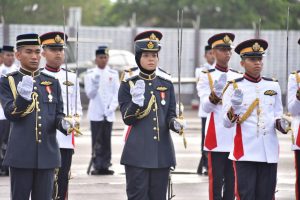
Note the number provided here – eight officers and twenty-two cadet officers – are from Malaysian Defence (based on the pictures posted by RMAF in its social media post on the event) as RMAF did not give a breakdown of the group which received their pilot wings apart from their total numbers and their streaming (23 fixed wing and seven rotary wing). Twenty-six of the newly minted pilots are from RMAF; three from the Army and one from RMN.
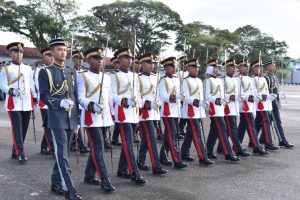
The release from RMAF:
PERBARISAN PENYAMPAIAN SAYAP PENERBANGAN KURSUS ASAS PENERBANGAN SIRI 83/21 DAN KURSUS ASAS PENERBANGAN HELIKOPTER SIRI 63/21
ALOR SETAR, 17 Disember 2022 – Perbarisan Penyampaian Sayap Penerbangan bagi Kursus Asas Penerbangan Siri 83/21 dan Kursus Asas Penerbangan Helikopter Siri 63/21 telah diadakan bertempat di Kolej Tentera Udara (KTU), Kepala Batas, Alor Setar, Kedah. Penyampaian Sayap Penerbangan telah disempurnakan oleh Panglima Tentera Udara, Jeneral Tan Sri Dato’ Sri Mohd Asghar Khan bin Goriman Khan TUDM kepada 30 pelatih iaitu 23 orang pelatih juruterbang pesawat sayap kaku dari Institut Penerbangan 1 (INSPEN 1) dan 7 pelatih juruterbang helikopter dari Institut Penerbangan 2 (INSPEN 2). Mereka terdiri daripada 26 pelatih dari Tentera Udara Diraja Malaysia, tiga (3) dari Tentera Darat Malaysia dan seorang dari Tentera Laut Diraja Malaysia.
Perbarisan pada pagi ini terdiri daripada komposisi satu (1) Flait Graduan seramai 30 graduan dan tiga (3) Flait Bantuan seramai empat (4) Pegawai dan 127 anggota Lain-Lain Pangkat yang diketuai oleh Leftenan Muhammad Zikri bin Mohd Zamri TUDM selaku Ketua Perbarisan. Perbarisan diiringi oleh Pancaragam Gabungan Kolej Tentera Udara, Alor Setar dan Akademi Tentera Udara, Ipoh di bawah pimpinan Leftenan Hanif bin Che Razak TUDM. Turut mencuri perhatian, Perbarisan Berjalan Lalu Dalam Masa Perlahan dan Cepat diiringi dengan penerbangan VIC Formation pesawat helikopter EC 120B dan pesawat PC-7 Mk II serta diakhiri dengan Terbang Lintas Hormat pesawat PC-7 Mk II semasa Hormat Panglima sebelum perbarisan keluar medan.
Bagi menggalakkan persaingan sihat di antara para pelatih, lima (5) piala telah dipertandingkan iaitu Piala Panglima Tentera Udara (Pelatih Terbaik Keseluruhan Sayap Kaku), Piala Panglima Tentera Udara (Pelatih Terbaik Keseluruhan Sayap Putar), Piala Panglima Pendidikan dan Latihan Udara (Pelatih Terbaik Akademik), Piala Komandan (Pelatih Terbaik Penerbangan Sayap Kaku) dan Piala Komandan (Pelatih Terbaik Penerbangan Sayap Putar). Menepati kualiti dan kriteria yang ditetapkan, Leftenan Mubin Mustaza bin Iskandar TUDM, anak kelahiran Alor Setar, Kedah dan graduan Universiti Pertahanan Nasional Malaysia (UPNM) dalam jurusan Kejuruteraan Mekanikal ini telah dinobatkan sebagai penerima Piala Panglima Tentera Udara (Pelatih Terbaik Keseluruhan Sayap Kaku) dan juga penerima Piala Panglima Pendidikan dan Latihan Udara (Terbaik Akademik). Bagi Piala Panglima Tentera Udara (Pelatih Terbaik Keseluruhan Sayap Putar) telah dianugerahkan kepada Leftenan Muhamad Syahrull Hazizi bin Norizan TUDM dari Segamat Johor, merupakan graduan UPNM dalam jurusan Pengajian Strategi Pertahanan. Penerima Piala Komandan (Pelatih Terbaik Penerbangan Sayap Kaku) pula telah dianugerahkan kepada Pegawai Kadet Wan Muhammad Ikmal bin Wan Mohd Razali yang berasal dari Wakaf Bharu, Kelantan dan graduan UPNM di dalam jurusan Penerbangan manakala Piala Komandan (Pelatih Terbaik Penerbangan Sayap Putar) menjadi milik Pegawai Kadet Wan Ilyasa bin Wan Ibrahim yang berasal dari Kuantan, Pahang dan juga graduan UPNM di dalam jurusan Penerbangan.
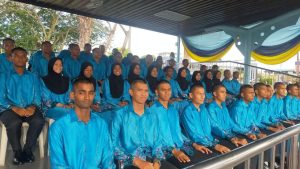
Under a programme titled 2U2I announced in 2019 between RMAF and UPNM, cadet officers selected for the Bachelor of Aviation will spent two years completing academic courses at the university. The undergraduates will undergo flight theory and basic flight training for two more years at the KTU to obtain their flight wings. Once they graduated, they will be commissioned into the services.
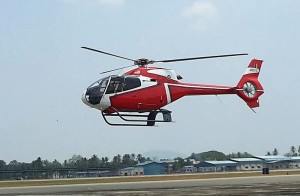
The 2U2I programme is aimed in reducing the age of pilots entering MAF from the current twenty-six to twenty-three. Previously, newly commissioned officers – RMAF, Army and RMN – need to obtain a bachelor’s degree from UPNM or other universities before embarking on their flight training. This means by the time a pilot declared operational in the three services, they will be around thirty. Under the new programme, they will be around twenty-seven.
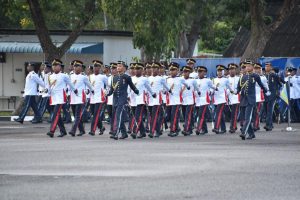
RMAF intent to train up to forty cadet officers annually (for all the three services, majority being RMAF as they got the biggest fleet) under the programme but as shown by the numbers who got their flight wings, it is a difficult undertaking.
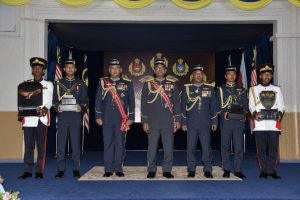
UPNM introduced the Bachelor of Aviation in 2018 with thirty-seven undergraduates joining the course. It is likely the cadet-officers who obtained their flight wings at the passing out parade reported above are from this batch. It must be noted also that RMAF is trying to get the Public Services Department (PSD) to approve the payment of flight allowances for the cadet officers training for the pilot wings. It is not known yet when this will get the approval of the PSD.
— Malaysian Defence


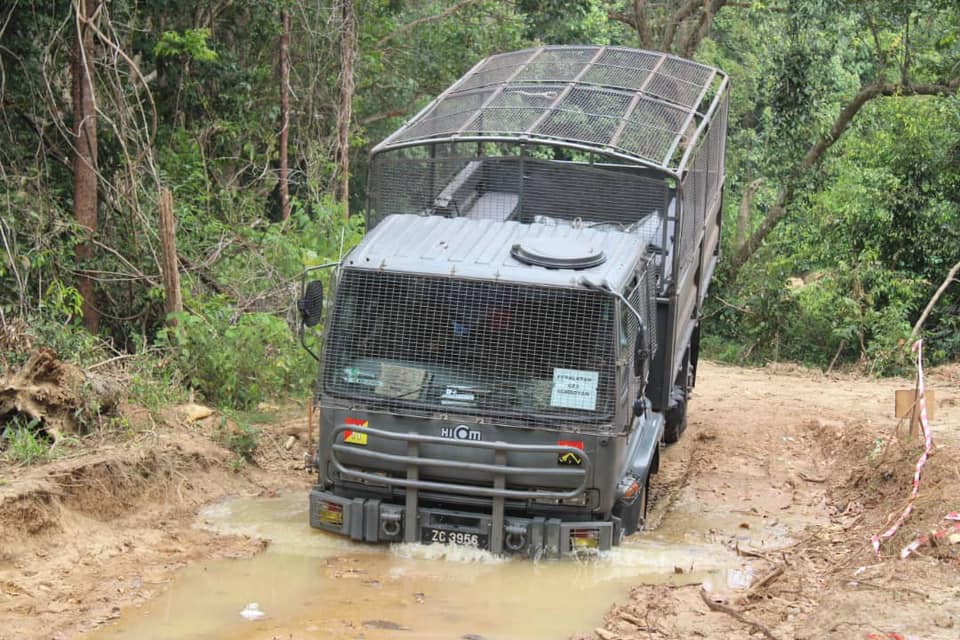


22 grads out of 37 cohorts is a heavy attrition but they just need to keep at it every year after year and pumping out pilots. I mean by the 5th year alone, there will be over 100 grad pilots in service and we don’t even have that many aircrafts in use! Let’s say given an active pilot service life is 10 years, we could have in any given year over 200 active duty pilots!
It depends actually, as out of 22 new pilot, only half of them will become operational pilots
And of those who gain their wings; some will be streamed for rotary or fixed wing transports. Some will later – after being streamed – be found unsuitable. Some might – for whatever reasons – leave the service prematurely.
Still we’re looking at the genesis of this program and naturally at the start, intakes and grads will be low at first. But if this program proves fundamentally sound and the selections are done more thoroughly to ensure passing % is much higher than today, the number of pilots going into flying duties will eventually increase.
Given the situation, I’m more confident we could grad more pilots in 5 years than getting enough new planes & choppers for them to fill in.
Yes, but not in the 200 numbers you are talking about
If given successive passing rates increase by a low 5% per year, we’re still looking at least 280-300 pilot grads within 10 years. Given industry standard attrition rate of 1/3 per year (for high risk occupations), we are still going to reach a high of 200+ active pilots by 10 years time.
Of course this is all dry math calculations based on this first year batch so in truth a lot more variables would come in; intake per year will vary – sometimes higher or lower than quota, the resources of the uni & TUDM to cater for increasing intakes, or will piloting still be an interest for the young, or even if TUDM will continue this program for 10 years or so. In 10 years, we already should be looking towards studying operation of 5th gen planes, if the MRCA will forthcoming circa 2035-40, so will the ever challenging syllabus be too much for them and the hinder the passing rate? A lot of variables, yes, but my guess is at least statistically sound.